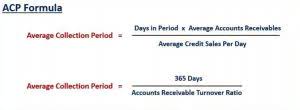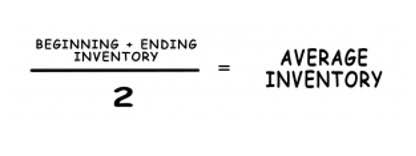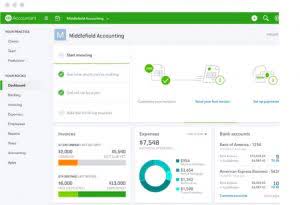What Is Bookkeeping? Definition, Tasks, Terms to Know

Providers of bookkeeping services also often invoice clients’ customers, pay their bills, and process their payroll. A particularly skilled bookkeeper will also offer services like cash flow forecasting and management to their small business clients. For businesses with over $200,000 of monthly expenses, this might offer the type of customization you’d need. Some additional services you may have access to include inventory tracking, BillPay, CFO services, and tax services. How often are you looking at your total current income and total current expenses? Leveraging bookkeeping services allows you to look at your income and expenses in real-time frequently.

Calculate tax deductions
Preparing this fact sheet would take about a half hour, another half hour preparing an agenda for a meeting and an hour meeting to determine the client’s interest level. Measure this time against the time you would spend trying to get a client with these specs. If you follow this “fact sheet” method for four clients, I believe you would generate at least one added engagement, along with the intangible benefit of a stronger relationship with all of these clients. Browse all our upcoming and on-demand webcasts and virtual events hosted by leading tax, audit, and accounting experts.
- You no longer need to worry about entering the double-entry data into two accounts.
- Demonstrating proficiency in utilizing AI to drive growth not only contributes to the firm’s success but also solidifies the young professional’s case for partnership.
- QuickBooks Online offers Expert Full Service Payroll for an additional cost.
- The Essential plan ($249 a month if billed annually or $299 billed monthly) focuses on bookkeeping only, giving you access to a dedicated team that performs monthly bookkeeping services.
- Bingham says that the bookkeeping community frowns upon commingling business and personal funds.
- And if you want straightforward finance tracking without in-depth analytics, Wave Accounting can help you with the basics.
- More questions about accounting software, online tax and payroll services, or anything else to do with bookkeeping services?
Incorporation Services

But to get the most out of Sage Business Cloud Accounting, you really need the $25-a-month plan. In contrast, the pricier plan includes more thorough reporting, unlimited users, and cash flow forecasting. Sage also offers a lot of support to first-time business owners with minimal bookkeeping experience. Its live Q&A chat lets you ask an expert financial questions during business hours, and you can always schedule an appointment with a Sage Accounting expert.

What is a bookkeeper’s job?
Some bookkeeping services charge a monthly fee while others charge by the hour. You can find services for as little as $20 per month while others run thousands per month. From a financial perspective, the adoption of AI has been highly beneficial.
Terms, conditions, pricing, service, support options, and support team members are subject to change without notice. Accountants, on the other hand, use the information provided by bookkeepers to summarize a business’s financial position and render financial advice to the business owner. Many accountants also prepare tax returns, independent audits and certified financial statements for lenders, potential buyers and investors. They will deal with your financial information, bank accounts, credit cards, invoices, and other important documents. Keeping track of financial data for a business takes time, effort, and money. But when you play your cards right, you can save on all 3 factors big time.
AI adoption in accounting: Real-world insights
You can request a callback anytime when you need a little extra help. When an invoice is past due, follow these five steps to collect outstanding payments so you can get paid sooner. solutions bookkeeping Tag things as you work to track events, projects, locations, and anything that matters. Run custom reports based on your tags for an instant view of insights that matter most to you.
Clarity with custom accounting reports

Moreover, Bookkeeper360 offers add-on solutions for CFO advisory, payroll, taxes, HR, and back-office. The first plan, Support, is geared toward businesses who want to continue to manage their own bookkeeping, with some assistance from the Bookkeeper360 advisors. At $199 per month, this plan includes two hours per month of support as well as training and check-ins from the Bookkeeper360 team. When doing the bookkeeping, you’ll generally follow the following four steps to make sure that the books are up to date and accurate.
- InDinero offers monthly, quarterly, and annual pricing but differs from the rest on our list because you have to talk to a salesperson to get an actual price.
- More importantly, if you would like to speak to us in person please click here to find an office near you and schedule an appointment.
- Want to kick off your small-business accounting with a solid accounting software service?
- And thousands of accountants and bookkeepers do use Xero already, so you can search Xero’s directory to find a local accountant who’s already familiar with the software.
- Accounting software, like QuickBooks Online, helps you organize and automate repetitive tasks related to your financial data, prepare small business taxes, run payroll, do your invoicing, and more.
Support links
Depending on the bookkeeping service, costs also rise when your business’s monthly expenses exceed a particular threshold. The decision comes down to whether the time saved is worth the expense. Lots of bookkeeping services are built to run on QuickBooks, an industry leader in accounting and bookkeeping software. Some services also support Xero, another popular cloud-based accounting software. If you’re comfortable with your current software, ensure your bookkeeping service supports it. Our complete list below includes why we selected each online bookkeeping service, monthly price details and features checklists to help you easily compare services.
- You can find independent bookkeepers on freelance websites and similar sources.
- My approach is to consider this “introduction” as a sales effort to make the advisory services’ sale.
- The service doesn’t include financial advisory services, tax advice, facilitating the filing of income or sales tax returns, creating or sending 1099s, or management of payroll.
- Feel confident about your business and your books with QuickBooks experts by your side to help you succeed.
- Depending on the bookkeeping service, costs also rise when your business’s monthly expenses exceed a particular threshold.






















